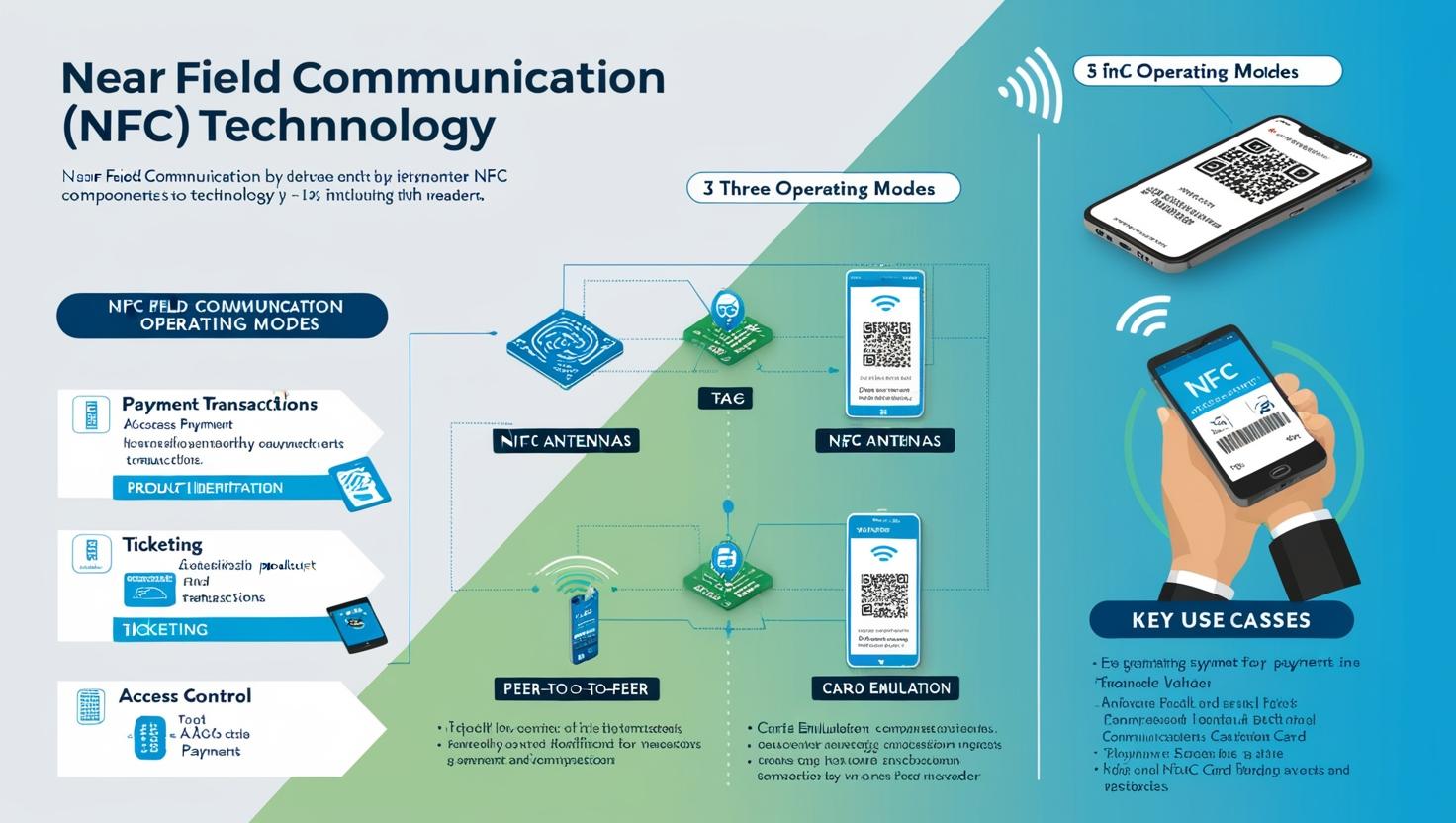In today’s fast-paced, contactless world, Near Field Communication (NFC) technology is quietly powering one of the most significant shifts in how we interact with devices, make payments, and share data. From tapping your phone at a checkout terminal to syncing a smartwatch with your mobile device, NFC is redefining convenience and connectivity.
This transformation is directly fueling NFC market growth, with increasing adoption across sectors like retail, consumer electronics, automotive, and healthcare. But what exactly is driving this expansion, and how is NFC enabling smarter, safer, and faster transactions and interactions?
The Rise of NFC in Mobile Payments
Perhaps the most prominent application of NFC is in mobile payments. Whether it’s Apple Pay, Google Wallet, or Samsung Pay, NFC allows users to complete transactions simply by holding their smartphone or wearable near a compatible payment terminal. This tap-and-go experience is not only fast and frictionless but also far more secure than traditional card swipes.
Security features like tokenization, biometric verification, and encrypted transactions make NFC-based mobile payments highly resilient to fraud. With increasing consumer demand for contactless and hygienic payment options — especially post-pandemic — businesses are rapidly upgrading their infrastructure to accept NFC transactions. This surge in deployment continues to drive NFC market growth worldwide.
NFC and Smart Devices: A Perfect Match
Beyond payments, NFC is becoming integral to the broader smart device ecosystem. It enables seamless communication between devices within a short range (typically less than 4 cm), allowing users to:
- Pair Bluetooth devices instantly (like headphones or speakers)
- Transfer files, contacts, and photos with a simple tap
- Access smart locks, security systems, and IoT-enabled appliances
- Authenticate access to secure networks or buildings
As manufacturers race to build smarter, more interconnected products, NFC is a go-to technology for low-power, secure, and real-time data exchange. The expanding role of NFC in wearables, smartphones, smart cards, and connected vehicles further contributes to overall NFC market growth.
Download PDF Brochure @
https://www.marketsandmarkets.com/pdfdownloadNew.asp?id=520

Key Drivers of NFC Market Growth
Several macro and technological factors are fueling the rise of NFC technology:
Consumer Preference for Contactless Interactions
With convenience and hygiene taking center stage, nfc contactless payments and data exchange have become essential.
Proliferation of NFC-Enabled Devices
From smartphones to point-of-sale (POS) systems, the increasing number of NFC-compatible devices is expanding the technology’s ecosystem.
Government and Enterprise Adoption
Public transportation systems, access control, and identity verification platforms in cities like Tokyo, London, and New York are heavily reliant on NFC.
Integration in IoT and Industry 4.0
NFC is being adopted for device provisioning, sensor configuration, and asset tracking, supporting industrial automation trends.
Growing Support from FinTech and Retail Sectors
Banks, payment gateways, and e-commerce platforms are investing in NFC to enhance user experiences and streamline checkout flows.
These dynamics collectively point toward strong and sustained NFC market growth over the next several years.
Emerging Use Cases Beyond Payments
While mobile payments dominate headlines, NFC is making waves in other verticals as well:
- Healthcare: Used in patient ID cards, medication tracking, and contactless medical device pairing.
- Logistics: Enables secure package tracking and verification of goods in transit.
- Hospitality: Hotel guests can unlock rooms or access amenities using NFC-equipped smartphones or key cards.
- Retail Loyalty Programs: Customers can tap to redeem rewards or access personalized offers.
- As these applications mature, they will further solidify the case for NFC market growth across a wide range of industries.
Challenges and the Road Ahead
Despite its momentum, NFC still faces competition from other wireless technologies like Bluetooth Low Energy (BLE) and QR codes. Moreover, device compatibility, infrastructure costs, and regional adoption disparities present hurdles.
However, with continuous innovation — such as multi-functional NFC chips, biometric-secured NFC cards, and cloud-based tokenization — the technology is poised to overcome these challenges and unlock new opportunities.
The future of NFC market growth will also be shaped by developments in digital identity, cryptographic security, and integration with blockchain for verifiable transactions and credentials.
NFC technology is no longer just a convenient feature — it’s a foundational layer of the digital economy. From revolutionizing mobile payments to enabling smart interactions across connected devices, NFC is driving a new era of secure, seamless, and intelligent connectivity.
As industries continue to digitize and consumers demand faster, smarter, and more secure experiences, the trajectory of NFC market growth remains strong and sustained. For businesses and innovators, investing in NFC is not just a trend — it’s a competitive imperative.
FAQ – NFC Technology & Market Growth
1. What is NFC and how does it work?
NFC (Near Field Communication) is a short-range wireless communication technology that enables data exchange between two compatible devices when placed close together (typically within 4 cm). It operates at 13.56 MHz and is commonly used for mobile payments, contactless data sharing, and device pairing.
2. Why is NFC important in mobile payments?
NFC allows users to tap-and-pay using smartphones, smartwatches, or contactless cards. It supports secure transactions through tokenization, encryption, and biometric authentication, making it one of the safest and most convenient mobile payment methods available.
3. What is driving NFC market growth globally?
- The key factors contributing to NFC market growth include:
- Widespread adoption of contactless payments
- Integration in smartphones, wearables, and IoT devices
- Growing demand for secure and fast data exchange
- Regulatory push for cashless economies and digital ID systems
- Rise of smart retail, healthcare, and transport applications
4. Which industries are adopting NFC technology the most?
- NFC is being rapidly adopted in:
- Retail & eCommerce (for payments and loyalty programs)
- Banking & Fintech (contactless debit/credit cards)
- Healthcare (patient tracking and medical devices)
- Automotive (keyless entry and infotainment)
- Consumer Electronics (wireless pairing and authentication)
